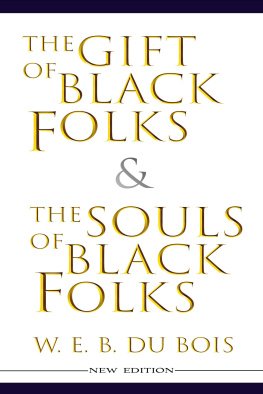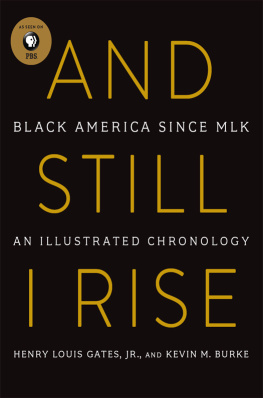The University of Chicago Press, Chicago 60637
The University of Chicago Press, Ltd., London
2004 by The University of Chicago
All rights reserved. Published 2004.
Paperback edition 2013
Printed in the United States of America
21 20 19 18 17 16 15 14 13 2 3 4 5 6
ISBN-13: 978-0-226-84719-1 (cloth)
ISBN-13: 978-0-226-10463-8 (paperback)
ISBN-13: 978-0-226-10981-7 (e-book)
10.7208/chicago/9780226109817.001.0001
Library of Congress Cataloging-in-Publication Data
Van Deburg, William L.
Hoodlums : Black villains and social bandits in American life / William L. Van Deburg.
p. cm.
Includes bibliographical references and index.
ISBN: 0-226-84719-5 (alk. paper)
1. African American criminalsHistory. 2. Crime and raceUnited StatesHistory. 3. African AmericansSocial conditions. 4. African Americans in popular culture. 5. Villains in popular culture. 6. United StatesRace relations I. Title
HV6791.V36 2004
305.896'073dc22
2004003549

This paper meets the requirements of ANSI / NISO Z39.48-1992 (Permanence of Paper).
ISBN-13: 978-0-226-10981-7 (e-book)
Hoodlums
Black Villains and Social Bandits in American Life
William L. Van Deburg
THE UNIVERSITY OF CHICAGO PRESS
CHICAGO AND LONDON
To Ethan Lloyd HuntAs Sweetback said, Hes our future, Brer.
Now, the papers gon call us thugs and hoodlums. A lot of people aint gon know whats happening. But the brothers on the block, who the mans been calling thugs and hoodlums for four hundred years, gon say, Them some out of sight thugs and hoodlums up there! The brothers on the block gon say, Who is these THUGS and HOODLUMS?... Well, theyve been calling us niggers, thugs, and hoodlums for four hundred years, that aint gon hurt me, Im going to check out what these brothers is doing!
Bobby Seale, chairman, Black Panther Party, 1968
Ive lived on this street for the past thirty four years. I just dont know what happened. The people have changed, the city, the kids... everything has changed.... Use to see kids playing basketball, baseball or skipping rope... not anymore. They all look old, mean and serious. The dope and the hoodlums done made everybody stay in their houses.
retired Detroit postal worker, 1986
Introduction
Heroes and villains are the yin and yang of American cultural expression, providing creative artists with a varied palette of moral shadings for their observations on the human condition. Real-world heroes and villains greet us daily, insinuating themselves into our lives via the news media and through random personal encounters. Our national history is a veritable treasure trove of heroes and villainsmany of whom become mythologized over time. All told, it is likely that a rough equality exists between the two opposed but complementary forms. Nevertheless, with all due respect to the many contributions that real, imagined, and historically enhanced heroic beings have made to American life, the chief concern of this book is with the yin, the dark force, the villain. Indeed, its central characters are villains who possess both spiritual and physical darkness. But why villainy? Why black villains?
As revealed daily via our major avenues of popular cultural expression, heroes have an uncanny ability to beat the odds, secure the victory, hog the spotlight, and live to fight another day. Villains, on the other hand, receive few celebratory proclamations or municipal parades. More often they are subjected to whispered slurs and bad press. Their public, if one can call it that, is encouraged by the mainstream to eschew emulation and to keep both professed interest and personal loyalty a closely guarded secret. Since most Americans are socialized into hero worship rather than villain worship, the latter group seldom has been studied with any comparable degree of seriousness. One result of this academic oversight is that most of us fail to make connections between heroes and villains that transcend the obvious. Fixating on their ability to shock and/or entertain, we frequently underestimate the villains contribution both to the development of heroic models and to a more complete understanding of humanitys dark side. As if cowering from purposeful scrutiny, villains have yet to experience their day in the sun.
The same can be said for black people and their history. Despite more than seventy-five years of Black History Month celebrations and a post-1960s proliferation of black studies programs, overall societal understanding of the African American historical experience, its uniqueness and its challenges, remains problematic. Lamentably, many otherwise well-schooled individualsincluding numerous black Americansstill do not have enough accurate information about the nations racial past to make historically informed decisions on present-day issues. In part, this problem can be traced to three closely related, culture-based tendencies: (i) whites long-term stereotyping of blacks as crude, cursed, and criminal; (2) blacks spirited refusal to accept or validate these negative images; and (3) African Americans equally determined efforts to balance the bad with the good through the celebration of race heroes.
Understandably, the black response to unwarranted vilification often has been shaped by a highly selective historical amnesia. In this slander-induced mental state, there is a marked tendency to treat all but the most sympathetic African American villains as aberrationsor as heroically inclined helpmeets known as social bandits. Those in serious denial are tight-lipped when presented with evidence to the contrary. They see white conspirators everywhere and manage to find extenuating circumstances for all manner of black-on-black crime. Some seem to equate racial loyalty with uncritical acceptance of aberrant behavior. Others obsess over group solidarity but are quick to vilify those within the black public sphere who dispute their orthodoxies. None of these defensive postures are grounded in a clear-eyed understanding of hoodlums and their ever-changing roles in the multicultural mix. It is hoped that this study of both real and imagined villains and social bandits will contribute to the formulation of a more accurate, less self-conscious African American history even as it sheds new light on the darkness of mind revealed in racist stereotypes.
To accomplish these goals, Hoodlums draws on a variety of data sets. Traditional historical sources such as autobiographical narratives, personal correspondence, period newspapers, and travel accounts are utilized. But so are Hollywood films, music lyrics, folklore studies, and ghetto gothic novels. Here, it is believed preferable to negotiate the twists and turns of history and myth with assistance from as many disciplinary perspectives and modes of inquiry as possible; to tease out fresh insights from often-studied eventsand from the detritus of our popular culture. The final product is wide ranging and resists narrow definitions of hero and villain. Although analytical and interpretive, it is not meant to be definitive. Hopefully, Hoodlums will encourage open and thoughtful discussion of its subject.
examines the history and diversity of villains in Western society, their defining characteristics and modus operandi. The villains numerous social roles are outlined and their motivations probed for insight into timeless questions: whether or not some individuals are born bad; the root cause and purpose of evil in human society. A major concern is the cultural connection that European Americans have made between moral evil and the color black. The syllogistic notion that since villainy is closely related to blackness, then dark-skinned peoples are in some way villainous is traced from Greco-Roman days through the Middle Ages to the era of the Atlantic slave trade. By the time English popular culture was transshipped to the North American colonies, numerous bloodie blackamoors and sinful sons of Ham were available for public scrutinyand condemnation. Inherited images of black Africans as a race of villains provided ego enhancement for whites, helping shape white supremacist beliefs.





 This paper meets the requirements of ANSI / NISO Z39.48-1992 (Permanence of Paper).
This paper meets the requirements of ANSI / NISO Z39.48-1992 (Permanence of Paper).